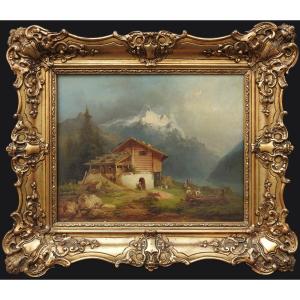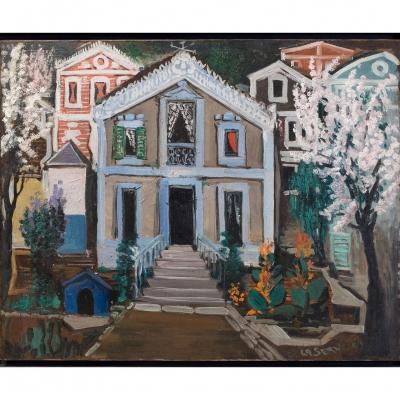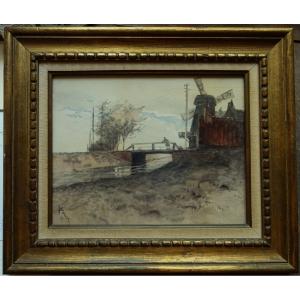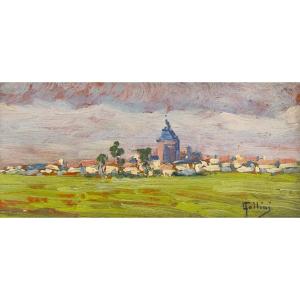Technique: Oil on canvas
Dimensions: 40 x 60 cm
Framed
Signed lower left Corot
Jean-Baptiste Camille Corot (July 16, 1796 – February 22, 1875) was a French landscape painter.
Corot was a leading figure of the Barbizon School of painting in France in the mid-19th century. He was a central figure in landscape painting. His work is characterized by the contemporary connection of neoclassicism and the emerging plein air impressionism. It was to him that Claude Monet exclaimed: "There is only one artist - Corot. We are nothing compared to him, nothing." Corot's contribution to figurative painting is no less significant: Degas even preferred Corot's figures to landscapes, and the figurative motifs painted by Picasso in the classical style are considered Picasso's homage to Corot's style. Historians loosely divide his work into individual periods, but the boundaries are not precisely defined, which was also contributed to by Corot's habit of sometimes finishing a painting years after he began painting it.
In his early years he painted in a traditional and academic style – with detailed precision, clear outlines and composition. After reaching the age of 50 his style changed – with a wider range of shades and a more poetic expression. Twenty years later (from about 1865) his style shifted completely towards mystery and poetry. These signs of the development of his expression are evident in the transition from traditional plein air painting in his youth, through warm natural shades, to studio painting of landscapes shrouded in uniform tones of silver in his later years. In his last 10 years he became “Père (Father) Corot” in Parisian artistic circles – he was warmly welcomed there and generally recognized as one of the world’s five greatest landscape painters of all time – on a par with the likes of Hobbema, Claude Lorrain, Turner and Constable.
Corot’s approach to landscape painting is far more traditional than one might think. If we compare even his later tree paintings with some of the compositions of Claude Lorrain, such as those exhibited in the Bridgewater Gallery, the similarity of technique is striking.
In addition to landscapes, of which Corot painted several hundred (the most popular were those painted in his later period), Corot produced a number of highly valued figurative paintings. Most of the austerely drawn pictures were created in the studio with the intention of keeping them for his private possession rather than selling them. Nevertheless, many of them have excellent composition, but the colors are in any case remarkable for their strength and purity. Corot also published numerous engravings and pencil drawings.





































 Le Magazine de PROANTIC
Le Magazine de PROANTIC TRÉSORS Magazine
TRÉSORS Magazine Rivista Artiquariato
Rivista Artiquariato